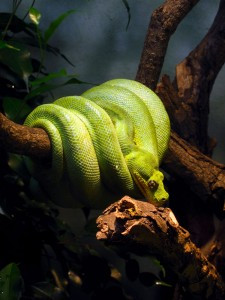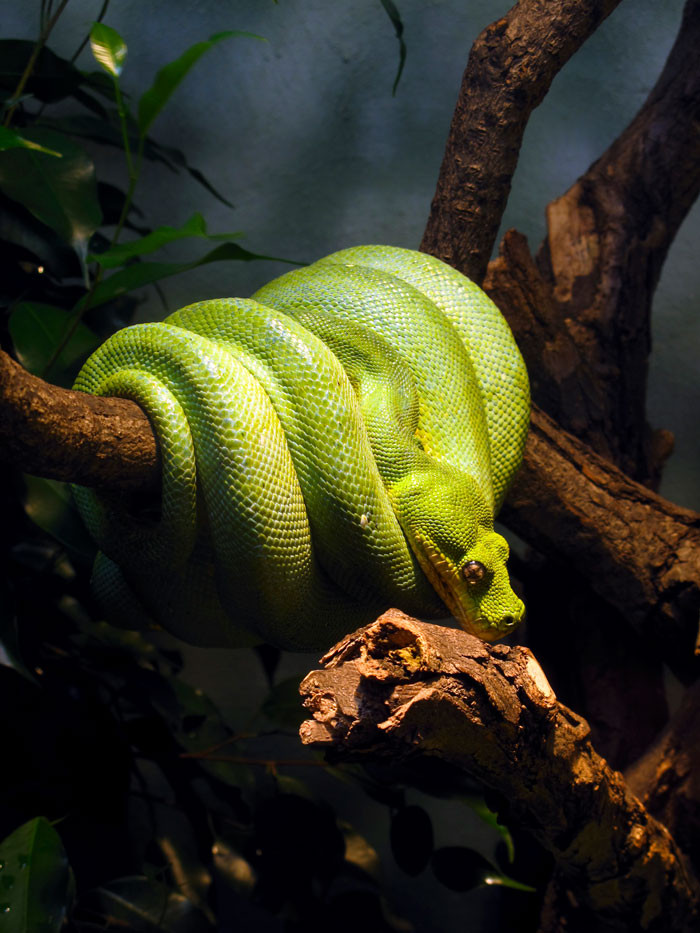Snake Charmers
Erik J. Martin //December 3, 2013//
Snakes have been tempting impressionable mortals since the Garden of Eden. Yet, they’re more popular today as pets than ever before, especially family friendly captive-bred species like ball pythons, corn snakes and king snakes, which are colorfully diverse, simple to maintain and safe to handle.
With their increased popularity as companion critters, manufacturers are offering an increasingly wide array of habitats, accessories and other products to appeal to consumers and making retailers coil up and take notice.
“Most pet stores today are selling the same basic species, as well as a few varieties of garter snakes, exotics, designer snakes and color morphs,” Frank Indiviglio, herpetologist, industry blogger and consultant to That Fish Place — That Pet Place, a pet retailer based in Lancaster, Pa., said. “But what’s different today is that there are newer products that let you do more to create a better environment for snakes.”
When snakes first became popular as pets a few decades ago, what was typically available amounted to little more than a glass cage, hide box and a top light, Indiviglio said.
“Now, there’s much more sophistication from manufacturers and a more educated consumer,” he said. “And there’s an increasing interest in conservation and home breeding.”
To accommodate this demand, “there are deluxe terrariums with sliding glass doors, ceramic heaters, misters and more products today that let you create complex environments.”
Available Products
Indeed, a variety of new habitats are now on the market that showcase more spatially efficient designs and interesting amenities.
Exo-Terra’s Congo Reptile Terrarium Kit includes a detailed Congo rainforest theme, a compact top canopy and all the basic accessories you’d expect with a starter kit. The vertically oriented Nano Glass Terrarium, also by Exo-Terra, boasts front window ventilation, dual doors for escape-proof access, and a waterproof bottom with a raised frame.
For those desiring a cube-shaped snake domicile, Penn-Plax makes a Classic Glass Habitat (18” x 18” x 18”) with front sliding doors and a locking tab for simpler maintenance and feeding as well as a deep fixed front window to accommodate a thicker-than-normal substrate or aquatic layer.
“Manufacturers are also using more native, realistic substrates that create a more natural look,” Indiviglio says.
Case in point, Fluker’s Aspen Accents, which give owners the ability to replace existing snake bedding with a colorfully fun substrate that doesn’t bleed when wet or contain toxic oils.
This green product, made from renewable resources, is easy to spot clean and is safe for all snake species.
Sarah Cunningham, director for the Center for Experiential and Environmental Education and assistant professor of Captive Wildlife Care and Education for Unity College in Unity, Maine, said it’s important to foster a snake habitat that’s conducive to natural behavioral opportunities and enrichment.
“This means providing a variety of surfaces and textures for the animal, from climbing vines and driftwood to rocks and natural objects,” Cunningham said.
Such supplies are abundant nowadays.
Mac’s, for example, makes a Creatures and Critters Grapevine Jungle Gym comprised of knotted, twisted grape driftwood. Zoo Med offers a Natural Full Cork Round Reptile Hideaway, essentially a small hollowed out log, that can be cut to any desired length or shape. And, Zilla features a Herp Hotel that provides ample spaces for basking and solitude in an eye-catching prehistoric rock design.
It’s best to practice what you preach to customers, too, by assembling in-store display habitats that incorporate naturalistic elements and a range of textures and surfaces, as well as simplified starter setups.
“That way, you can show shoppers that they can either go the simple route, if they’re on a budget, or complex,” said Indiviglio.
Change It Up
Whether it’s an in-store display cage or a starter terrarium you’re pitching to a customer, Cunningham says it’s also important to remind staff and patrons alike that cage contents need to altered from time to time to mimic the snake’s ever-changing indigenous landscape.
“Don’t leave a caged environment static forever,” he said. “Move objects around and create an exploratory opportunity for that animal to encourage a more active pet, which is also more attractive to customers. Also, try to create a bit of a hunting enticement for the snake by dragging its food around the habitat and making a scent trail that it can follow.”
Remember, Cunningham added, “that when animals can’t perform behaviors that are natural for them, as often happens in a captive environment, it can affect their health and well-being.”
When it comes to stocking food staples for slitherers, pre-frozen mice, including “pinkies” (newborn mice) for smaller snakes, continue to be a must. In addition, Indiviglio suggests carrying earthworms and live fish like shiners, minnows and goldfish for garters and other species.
Lastly, Indiviglio recommends promoting your pride as a retailer for carrying captive-bred species via signage and in sales literature.



















